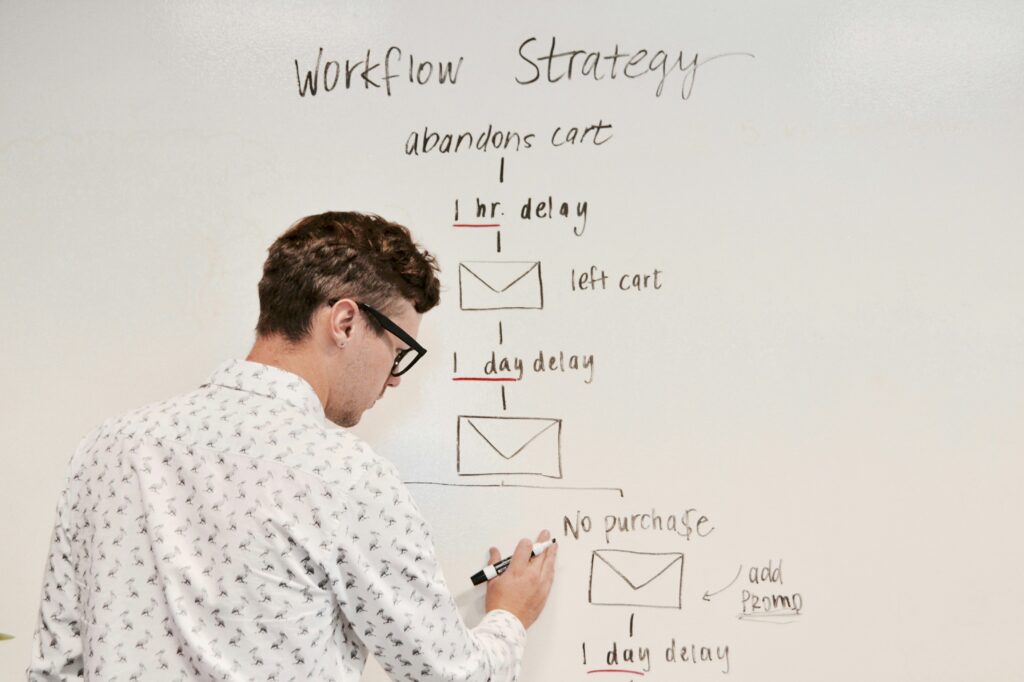In today’s fast-paced digital landscape, product managers (PMs) are under constant pressure to deliver exceptional products while managing teams, aligning stakeholders, and staying ahead of the competition. To achieve this, successful PMs rely not only on experience and intuition but also on proven product management matrices and frameworks.
In this article, we’ll explore the most effective tools used by modern product managers to streamline decision-making, enhance team collaboration, and ensure on-time product delivery. This is part one of our Product Management Framework Series, starting with Impact-Effort Matrix, RICE Scoring, and the MoSCoW Method.
1. Impact-Effort Matrix: Prioritization Made Simple
One of the simplest yet powerful tools in a PM’s arsenal is the Impact-Effort Matrix. It’s a 2×2 matrix used to categorize tasks or features based on the estimated impact they’ll have and the effort required to implement them.
How It Works:
- High Impact / Low Effort: Quick Wins – Prioritize these first.
- High Impact / High Effort: Major Projects – Plan strategically.
- Low Impact / Low Effort: Fill-ins – Do when time permits.
- Low Impact / High Effort: Time Wasters – Consider removing.
Benefits:
- Keeps the product roadmap lean.
- Helps teams avoid spending resources on low-return items.
- Encourages fast, iterative improvements.
Real Example:
A product team at a SaaS startup used this matrix to prioritize user-requested features. The matrix helped them realize that a “Dark Mode” feature, which was highly demanded and required minimal effort, should be rolled out before more complex but less impactful changes.
2. RICE Scoring Model: Objective Feature Evaluation
The RICE Scoring Model is perfect for objective prioritization. It evaluates each feature based on:
- Reach (How many users will it affect?)
- Impact (How much it improves the experience?)
- Confidence (How sure are we about the estimates?)
- Effort (How many person-hours will it take?)
Formula:
RICE Score = (Reach × Impact × Confidence) / Effort
Why Use RICE?
- Encourages data-backed decisions.
- Reduces personal bias during planning.
- Ideal for aligning cross-functional teams on what matters most.
Use Case:
A mobile app team used RICE scoring to evaluate 10 possible features. Surprisingly, a feature previously considered “low-priority” had a high reach and impact with minimal effort. With this matrix, they made a smarter decision and saw a 12% user retention boost post-release.
3. MoSCoW Method: Managing Stakeholder Expectations
MoSCoW stands for:
- Must Have
- Should Have
- Could Have
- Won’t Have (this time)
This method is excellent for scoping features in product releases and communicating priorities to stakeholders.
Benefits:
- Creates clarity during sprint planning.
- Helps avoid feature creep.
- Supports agile development workflows.
Practical Tip:
Always document stakeholder conversations when deciding MoSCoW categories. This adds transparency and provides reference points when changes are requested later.
4. Combining Frameworks for Greater Effect
While each matrix has individual strengths, their real power lies in combination:
- Use RICE to score a backlog of features.
- Then plot top-scoring features on an Impact-Effort Matrix.
- Finalize sprint scope using the MoSCoW Method with stakeholders.
This layered approach provides a balanced view of strategy and execution.
Common Pitfalls & How to Avoid Them
Even experienced PMs can misuse frameworks. Some key pitfalls include:
- Overestimating impact without user data.
- Underestimating effort, leading to timeline overruns.
- Using frameworks in silos, causing disconnect between planning and execution.
Pro Tip: Always align framework outputs with team retrospectives to identify where assumptions diverged from real outcomes.

Photo by Campaign Creators on Unsplash
Conclusion
In the realm of product management, intuition is important—but data and structured thinking are even more powerful. Tools like the Impact-Effort Matrix, RICE Scoring, and MoSCoW Method empower PMs to make clearer decisions, build trust with stakeholders, and deliver products that truly matter.
Start by applying one of these frameworks in your next planning session. Over time, as your team matures, you’ll be able to layer them together for maximum effectiveness.


Leave a Reply